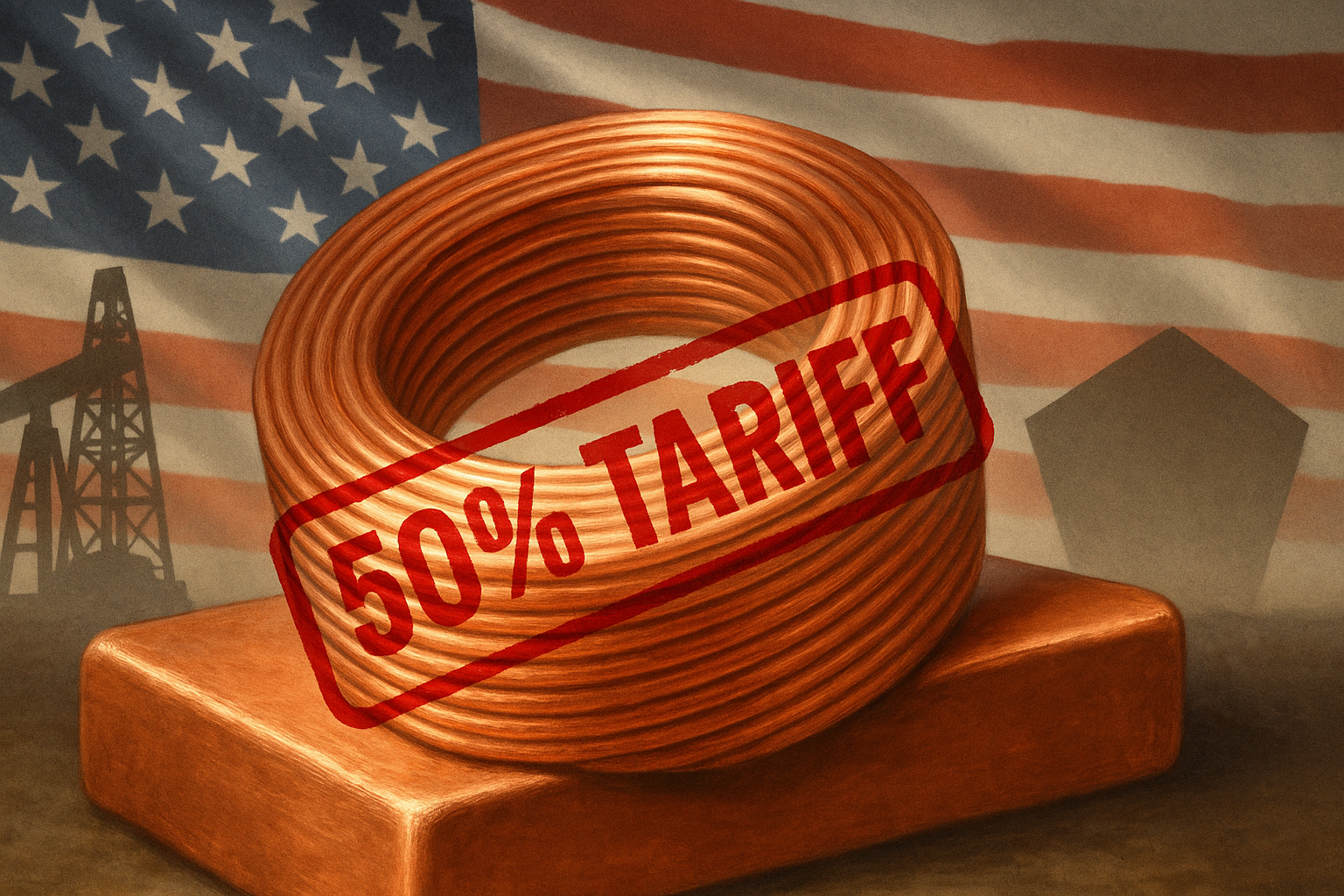Trump has decided that copper—yes, the reddish metal that's been around since ancient civilizations—suddenly constitutes a national security issue. His threat of massive 50% tariffs on imported copper starting next August has sent commodities markets spinning in what traders call "price discovery" but what looks more like "collective confusion" to the rest of us.
I've covered commodity politics for years, and this one's a doozy.
The former president made the announcement with his trademark bombast, declaring copper the "second most used material in the Department of Defense" while blaming "sleepy leaders" for America's diminished copper industry. The theatrical timing—nine months after the election—speaks volumes about the actual intent here.
Copper: The Metal That Makes Markets Move (and Analysts Overreach)
Economists didn't nickname it "Dr. Copper" for nothing. The metal's price movements supposedly diagnose economic health with near-medical precision, though I've always found this attribution a bit too clever by half.
Look, copper at $4.50 per pound isn't revealing anything mysterious. It's telling us what we already know—infrastructure spending is up, electrification continues apace, and commodity traders need something to do between client lunches and reserving tables at overpriced steakhouses.
Having watched copper markets for over a decade, I can tell you the reality sits somewhere between the bulls who see industrial renaissance in every uptick and the bears who forecast economic collapse whenever prices dip. It's just... copper. Important, sure. Mystical? Hardly.
The Tariff Game: Winners, Losers, and Confused Bystanders
The market implications here are about as subtle as a sledgehammer.
First off, domestic miners—Freeport-McMoRan, Southern Copper, Teck—are the obvious winners, at least on paper. Their stocks jumped on the announcement, which is what happens when someone threatens to kneecap your competition. (I checked with several analysts who confirmed these companies could see significant near-term benefits if the tariffs materialize.)
Then there's the "pull-forward effect"—that frantic rush to import materials before tariffs hit. We saw this movie with steel and aluminum tariffs. It never ends well. First comes the import surge, then the inventory glut, followed by price corrections that somehow surprise everyone despite being entirely predictable.
Copper's Long Reach (Into Your Wallet)
If implemented (a big "if"), these tariffs would ripple through the economy faster than electricity through... well, copper wire.
This isn't just about pennies and pipes. Copper is crucial for EVs, data centers, and renewable energy—basically anything involving electrons moving from here to there. Tesla and other automakers would face higher costs. Construction companies would see margins squeezed. Defense contractors like Raytheon would either absorb the hit or, more likely, pass it straight to the Pentagon—which means taxpayers foot the bill.
The inflationary impact? Potentially significant enough to complicate the Fed's rate-cutting agenda. I can already picture Jerome Powell's slightly pained expression as he explains yet another "transitory but not really" factor to increasingly skeptical Congressional committees.
Election Year Metallurgy (Yes, That's a Thing Now)
Let's cut through the economic jargon and call this what it is: a campaign promise disguised as national security policy.
Announcing tariffs that would take effect nine months after the election is... convenient. It's like writing a check dated for next year—all the virtue signaling with none of the immediate consequences.
And why copper? Perhaps because Arizona—a crucial swing state—happens to be a major copper producer. What an astonishing coincidence that has absolutely nothing to do with electoral calculations! (That was sarcasm, in case it wasn't clear.)
The Genuine Questions Beneath the Politics
Beneath all the political theater lies a legitimate conversation about supply chain resilience. The U.S. does import about 44% of its refined copper, primarily from Chile and Canada.
Is that dependence problematic? Maybe. Would slapping arbitrary 50% tariffs solve anything? Probably not.
A thoughtful approach might involve targeted investments in domestic production, recycling technology, and strategic reserves. But thoughtful approaches rarely generate campaign rally chants or stock market pops.
In the meantime, markets will price in some probability of these tariffs materializing, discount for election uncertainty, and then largely forget about it until the next headline jolts trader algorithms into action.
And somewhere, I guarantee you, a CNBC anchor will describe copper prices as "melting up" or "melting down," and we'll all pretend that's clever instead of the tired metallurgical pun it is.
Some things in financial media never change—even when they should.




